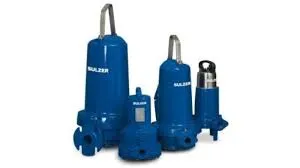Khmer
- Afrikaans
- Albanian
- Amharic
- Arabic
- Armenian
- Azerbaijani
- Basque
- Belarusian
- Bengali
- Bosnian
- Bulgarian
- Catalan
- Cebuano
- Corsican
- Croatian
- Czech
- Danish
- Dutch
- English
- Esperanto
- Estonian
- Finnish
- French
- Frisian
- Galician
- Georgian
- German
- Greek
- Gujarati
- Haitian Creole
- hausa
- hawaiian
- Hebrew
- Hindi
- Miao
- Hungarian
- Icelandic
- igbo
- Indonesian
- irish
- Italian
- Japanese
- Javanese
- Kannada
- kazakh
- Khmer
- Rwandese
- Korean
- Kurdish
- Kyrgyz
- Lao
- Latin
- Latvian
- Lithuanian
- Luxembourgish
- Macedonian
- Malgashi
- Malay
- Malayalam
- Maltese
- Maori
- Marathi
- Mongolian
- Myanmar
- Nepali
- Norwegian
- Norwegian
- Occitan
- Pashto
- Persian
- Polish
- Portuguese
- Punjabi
- Romanian
- Russian
- Samoan
- Scottish Gaelic
- Serbian
- Sesotho
- Shona
- Sindhi
- Sinhala
- Slovak
- Slovenian
- Somali
- Spanish
- Sundanese
- Swahili
- Swedish
- Tagalog
- Tajik
- Tamil
- Tatar
- Telugu
- Thai
- Turkish
- Turkmen
- Ukrainian
- Urdu
- Uighur
- Uzbek
- Vietnamese
- Welsh
- Bantu
- Yiddish
- Yoruba
- Zulu
Telephone: +86 13120555503
Email: frank@cypump.com
ធ្នូ . 13, 2024 17:14 Back to list
electric submersible slurry pump
Electric Submersible Slurry Pumps An Overview
Electric submersible slurry pumps (ESSPs) are vital components in a variety of industrial and civil applications where the efficient transport of slurry is necessary. A slurry, which is a mixture of liquid and solid particles, is commonly generated in industries such as mining, construction, and wastewater treatment. The capability of ESSPs to operate submerged makes them uniquely suited for pumping these challenging materials, as they can efficiently handle thick, abrasive slurries that would pose significant difficulties for conventional pumping systems.
Design and Functionality
The design of an electric submersible slurry pump revolves around its unique construction, which allows it to operate below the surface of the liquid being pumped. Typically, an ESSP consists of a pump body, an impeller, a motor, and a seal assembly. The motor is usually located at the top of the unit, while the pumping mechanism operates at the bottom. This design not only protects the motor from the abrasive slurry but also enables direct engagement with the material being pumped.
One of the crucial components of an ESSP is its impeller, which is designed for handling solid particles. The impeller must be constructed from robust materials such as high-chrome cast iron or stainless steel, allowing it to withstand wear and tear from abrasive materials. Additionally, ESSPs often feature adjustable clearances between the impeller and the pump casing, which can be modified to optimize performance based on the specific characteristics of the slurry being pumped.
Applications
Electric submersible slurry pumps find applications across various industries. In mining, they are used to manage tailings, which are the byproducts of mineral extraction processes. Here, the pumps efficiently transport viscous slurry from the mining site to processing facilities or waste disposal areas. In construction, ESSPs aid in dewatering activities, especially in sites where groundwater intrusion is a concern. By removing excess water mixed with soil, they prevent the weakening of foundation structures.
electric submersible slurry pump

In the wastewater treatment industry, these pumps are instrumental in transporting sludge, ensuring that the solids can be processed effectively
. Their ability to pump highly viscous materials makes them essential for maintaining the flow of operations in treatment plants. Other industries, including agriculture and dredging, also rely on electric submersible slurry pumps for their high efficiency and reliability in handling various types of slurries.Advantages
The advantages of using electric submersible slurry pumps are multifold. First and foremost, their submersible design allows for space-saving installation and reduced noise levels, making them more suitable for residential or urban applications. Additionally, ESSPs offer better energy efficiency compared to surface pumps, which often require additional equipment to lift the slurry from below the surface.
Another significant benefit is their ability to handle solids of varying sizes and shapes without clogging—a common issue faced by traditional pumps. Their resistance to erosion and corrosion due to robust construction materials ensures longer operational life and reduced maintenance costs, translating into significant savings for industries reliant on these pumps for their daily operations.
Conclusion
In conclusion, electric submersible slurry pumps are indispensable tools in various industries, thanks to their design, efficiency, and versatility. As industries continue to evolve and face new challenges, the demand for advanced pumping solutions will only increase. Embracing technologies such as ESSPs ensures that industries can continue to operate efficiently, even in the most challenging environments. As we look to the future, innovations in electric submersible pump technology will likely enhance their performance, further solidifying their role in industrial operations worldwide.
-
High-Performance Air Pumps for Sand & Gravel | Efficient Transport
NewsAug.03,2025
-
ISG Series Vertical Pipeline Pump - Chi Yuan Pumps Co., LTD.|Energy Efficiency, Corrosion Resistance
NewsAug.03,2025
-
ISG Series Pipeline Pump - Chi Yuan Pumps | Energy Efficiency&Compact Design
NewsAug.03,2025
-
ISG Series Vertical Pipeline Pump - Chi Yuan Pumps Co., LTD.|High Efficiency, Low Noise, Durable
NewsAug.02,2025
-
ISG Series Vertical Pipeline Pump - Chi Yuan Pumps | High Efficiency, Low Noise
NewsAug.02,2025
-
ISG Series Vertical Pipeline Pump- Chi Yuan Pumps Co., LTD.|High Efficiency&Compact Design
NewsAug.02,2025










